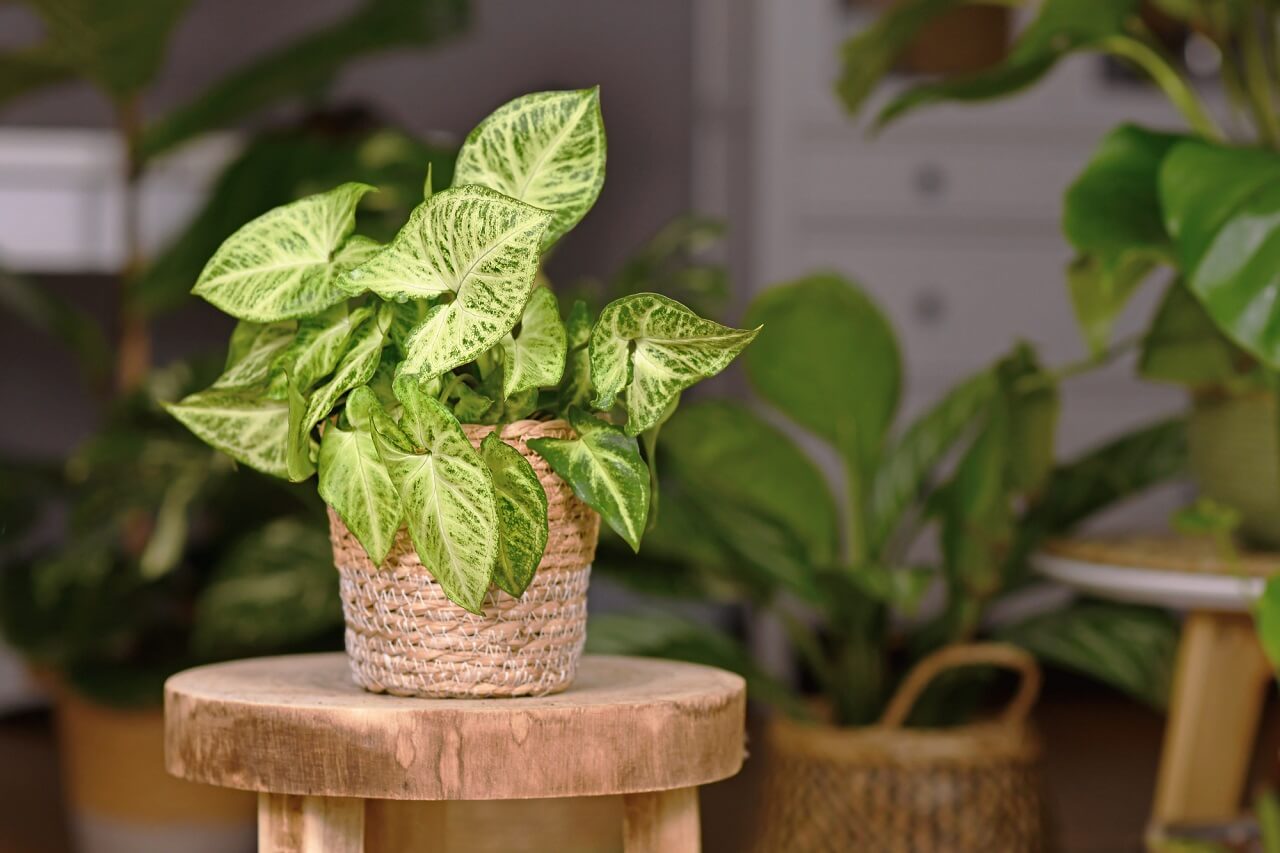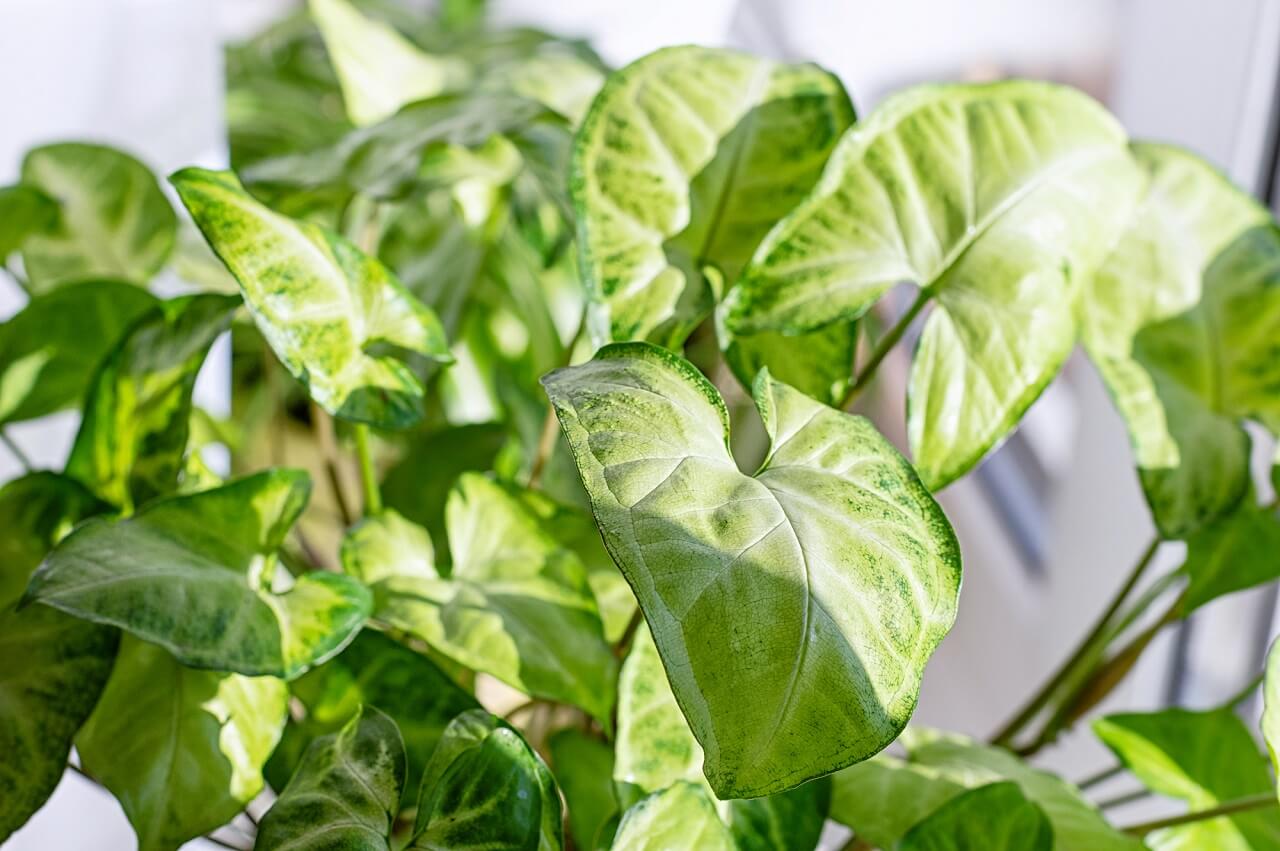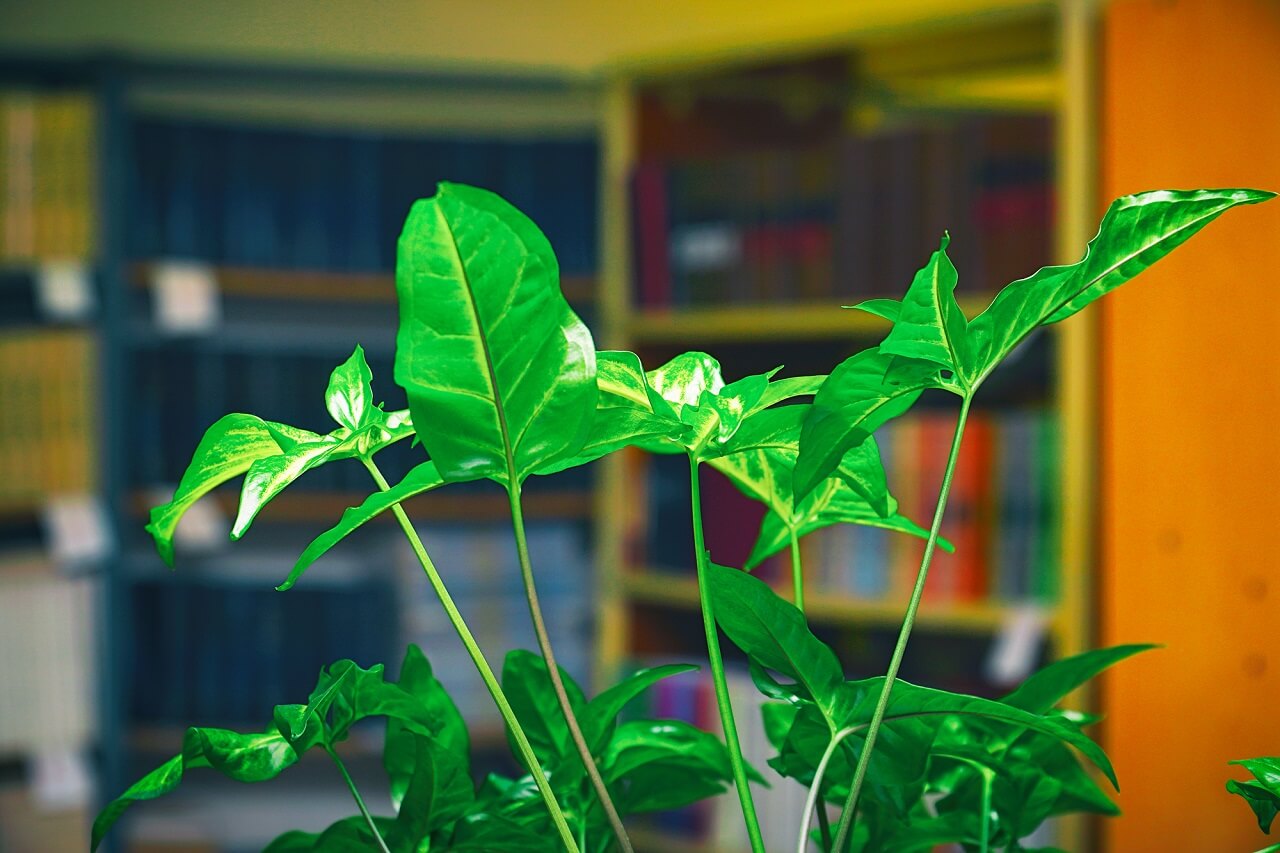Arrowhead plants, or Syngonium, are generally non-fussy, easygoing plants. But even the easiest plants can be divas once in a while when they need something. If your Syngonium is looking sad, it probably just wants a little extra TLC. Read on to diagnose the issue and find out how to fix it.
What You'll Learn Today
What Causes Brown Spots On My Arrowhead Plant?

There are a couple of different reasons why the leaves of an arrowhead plant can turn brown. The cause depends on the location of the browning. Here are the most common issues behind brown leaves:
Brown Tips
If just the tips of your arrowhead plant’s leaves are brown, the air is either too dry, or it’s not receiving enough water. It could also be a combination of the two issues.
Try sticking your finger in the soil to check the moisture level. If the soil is completely dry, your plant needs a good thorough watering.
The soil should not be allowed to dry out completely. You should water your Syngonium when only the top inch of soil is dry.
If the leaves of your plant feel dry and crispy, the air is probably too dry. Misting the leaves a couple of times per day is a temporary solution.
For a more long-term solution to dry air, a pebble tray is a great option. Simply fill a tray with pebbles or small stones and fill the tray with water about halfway. Then place the pot in the middle of the tray.
The water in the pebble tray will gradually evaporate and provide moisture to the air surrounding the Syngonium. Just make sure the water level does not reach the drainage hole of the pot since sitting in water can lead to root rot and other issues for arrowhead plants.
For more information on pebble trays and how to make them, watch this demonstration on YouTube:
Brown Spots With Yellow Rings
This is a telltale sign of leaf spot disease, which arrowhead plants are prone to. Bacteria or fungus target the foliage of the plants and leaves behind the spots, which can vary in size and shape.
To treat leaf spot disease, start by removing the infected leaves on your arrowhead plant. Next, increase the air circulation around your plant.
To increase air circulation, you can place your plant by a window, maintain proper ventilation in the room, and be sure that your plants are not too close together.
It’s important to note that you should never mist any plant that you suspect might have leaf spot disease. The water can cause the bacteria to spread.
Why Are the Leaves of My Arrowhead Plant Turning Yellow?

This can be somewhat tricky to diagnose since yellow leaves can be a symptom of both underwatering and overwatering. You’ll have to think back on your watering habits to figure this out.
Remember that Syngonium plants like well-draining, moist soil, but don’t like being soaked or sitting in water. Make sure your plant is in a pot with a drainage hole, and that you’re watering when the top layer of soil is dry. This usually works out to be about once every 4-6 days.
Why is My Arrowhead Plant Drooping?
Drooping leaves may or may not be a problem with your arrowhead plant. A few different things can cause leaves to droop, but you should be able to tell the difference based on how your plant looks. For example:
Natural Growth
Arrowheads have soft stems that cannot support the weight of their leaves when they grow out. These plants are natural climbers, so it’s normal for their leaves to flop over.
If your plant looks healthy otherwise apart from the drooping leaves, you have a few options:
- Prune your Syngonium regularly to prevent the leaves from flopping when they grow out.
- Put your plant in a hanging basket and let the leaves cascade over the side.
- Let your arrowhead climb by using a trellis or moss pole.
Lack of Water
If your arrowhead’s leaves are drooping from a lack of water, you’ll notice a generally unhealthy appearance. Again, check the moisture level in the soil and make sure it is moderately moist, but not soaked.
Why is My Arrowhead Plant Curling?

Syngonium plant leaves can curl and wilt for several different reasons. Here are some of the possible causes:
Light
Your plant might need more light. Arrowheads prefer bright light, but not direct sun.
Nutrients
Your arrowhead plant’s soil might be lacking proper nutrients. These plants prefer an all-purpose potting mix and benefit from being repotted once every year or two.
If the soil is old, try replacing it, wait a few days, and see if your plant perks up. You can also try fertilizing it with all-purpose plant food, which can be done about once per month during the growing season.
Pot Size
If your Syngonium has outgrown its pot and is feeling crowded, the leaves may curl. Assess the size of the pot, and see if it might benefit from a bigger container.
Low Humidity
Your plant might need more moisture in the air. You can fix this by misting the leaves every day, setting your arrowhead on a pebble tray, or using a humidifier in the room.
Diagnosing an unhappy Syngonium might seem overwhelming at first. It’s challenging to determine a cause when the symptoms of several problems overlap.
Fortunately, arrowheads are fairly forgiving plants, so you have time to figure out what the issue is. Just slowly work your way through each possible cause, and give your plant some time to recover between trying each solution.
Do Arrowhead plants get affected by pests?
This plant is vulnerable to aphids, mealybugs, scale and spider mites – but no more than any other house plant. You can easily deal with infestations by using a homemade or organic pesticide.